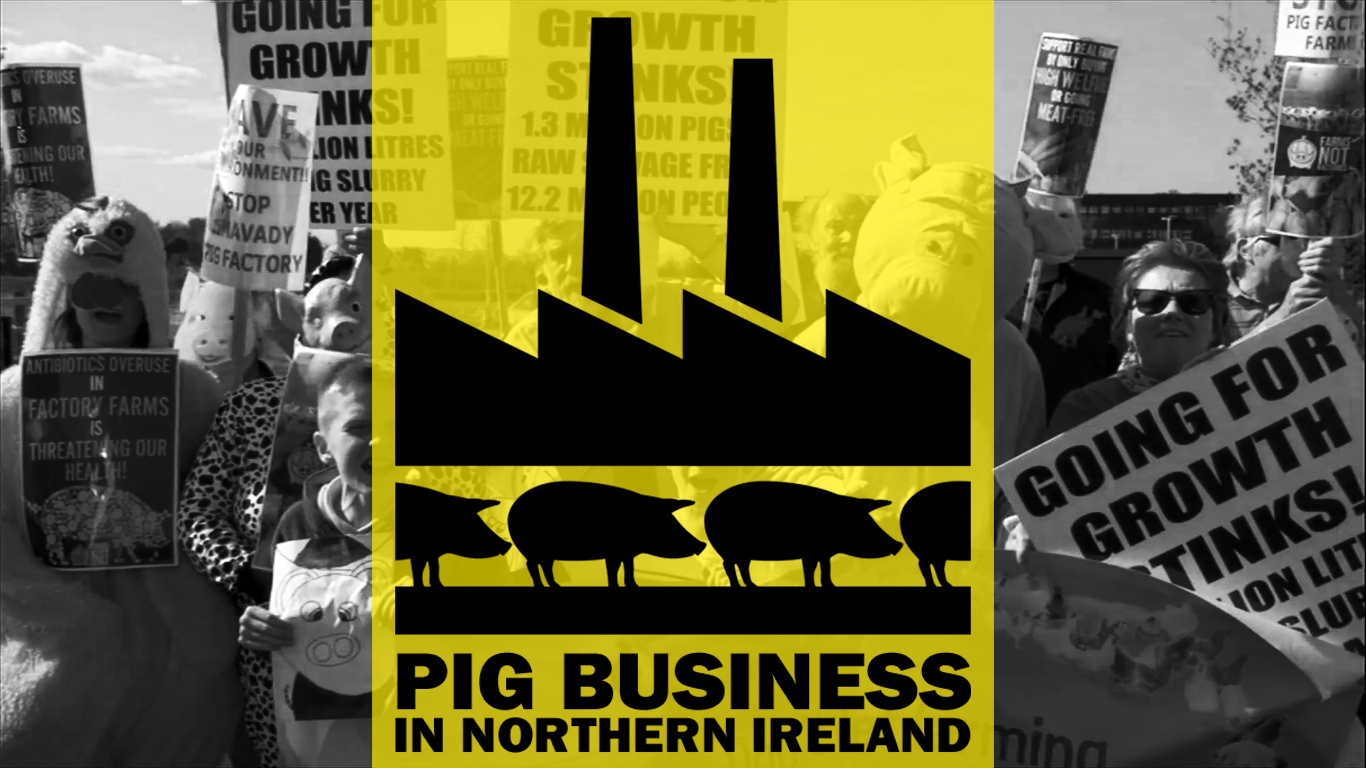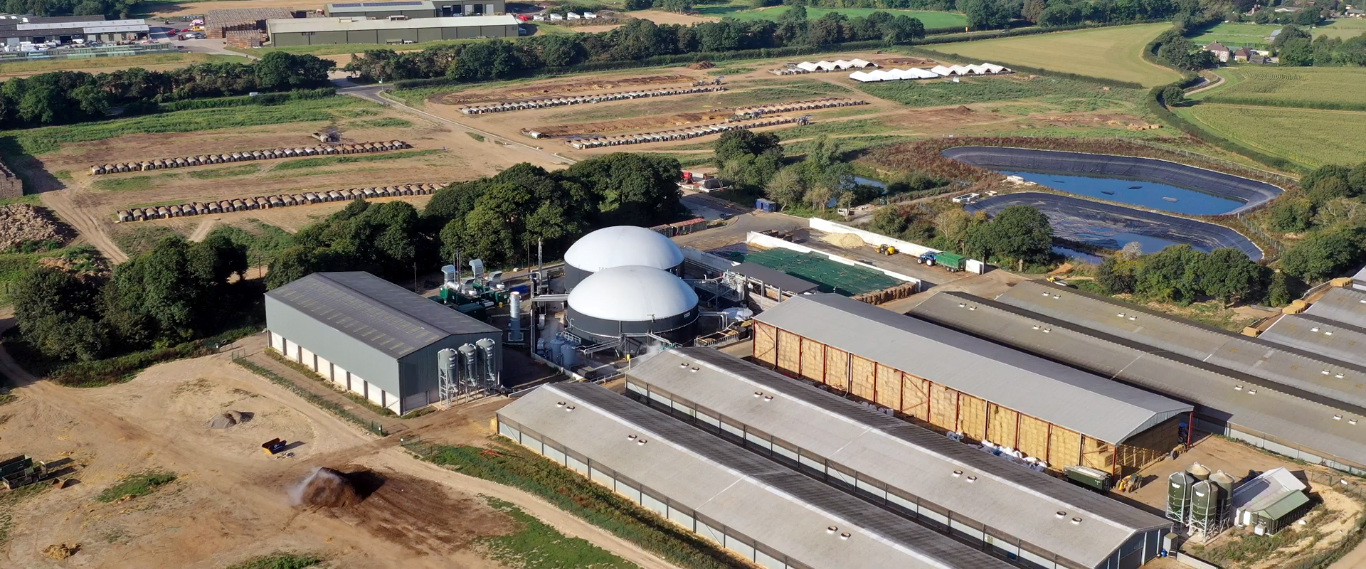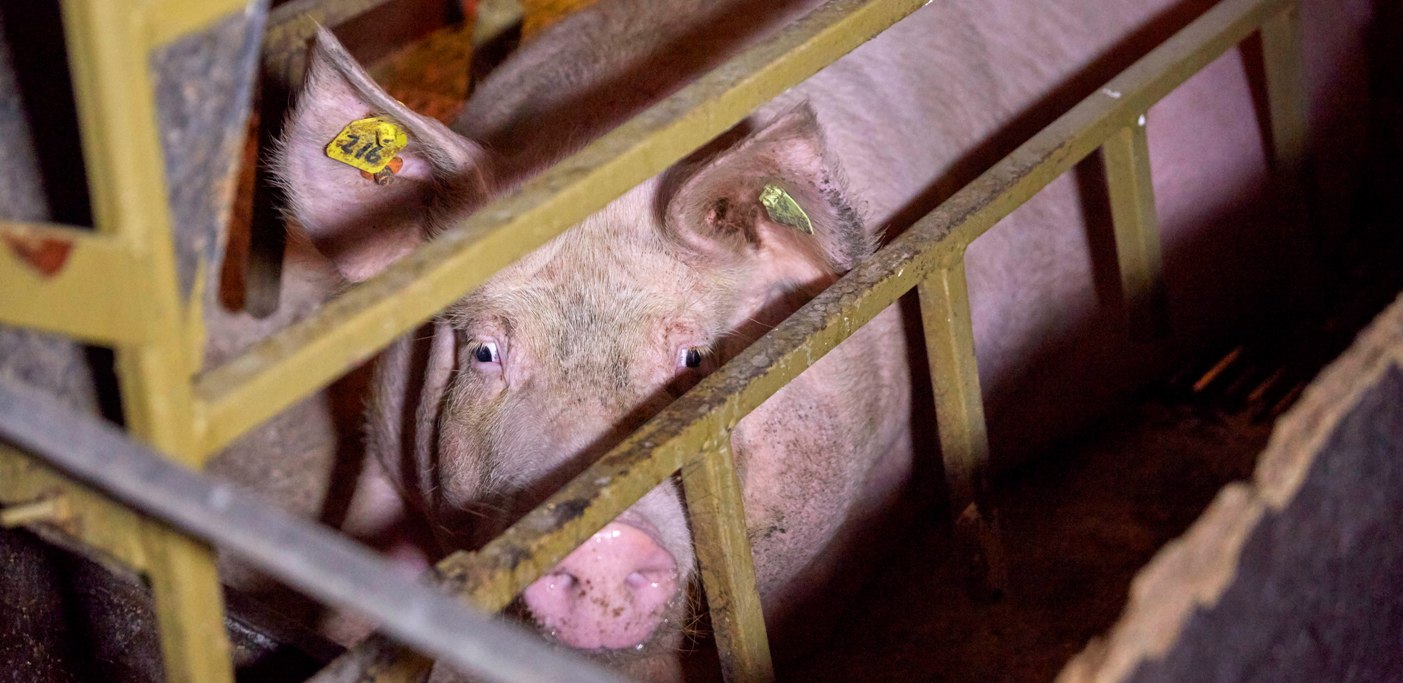90sec Trailer 12min Short Take action
We need a ban on the building of pig factories! Take action today.
Friends of the Earth Northern Ireland and Farms Not Factories have produced the film Pig Business in Northern Ireland to expose the true costs of pig factories on local peoples’ lives. Should planning permissions continue to be granted, emissions from thousands of pigs crammed into huge sheds and thousands of tonnes of slurry will damage local protected sites and ruin local peoples’ lives with the toxic stench. The overuse of antibiotics just to keep the pigs alive leads to antibiotic-resistant diseases that pass from pigs to humans.
We are asking people to sign this letter addressed to Denis McMahon, Permanent Secretary for the Department for Agriculture, Environment, and Rural Affairs, asking him to ban all new pig factory farms. Please watch and share – together we can help get a ban any new pig factories.
More on the film…
Pig Business Northern Ireland reveals how residents concerns were brushed aside when planning consent was granted for a new pig factory near Newtownabbey, outside Belfast. The scale of the project has shocked local residents who will be affected by noise, smell and pollution from the 15,000 intensively confined pigs.
Another application for what could be the biggest pig factory in the UK near Limavady has been held up because the additional slurry will impact seventeen protected sites nearby. Local residents are holding their breath while they wait to find out if the Northern Ireland Environment Agency will keep their nerve and refuse a permit.
The film, also available in a shorter 12-minute version, includes interviews with an ex-Minister for Agriculture, an ex-planning committee member, several Members of the Legislative Assembly (the Stormont parliament), renowned toxicologist Vyvyan Howard, famous folk musician Paddy Nash and many more who have been campaigning against the unpopular project. We also interview local small scale pig farmers who would grow in number if consumers only bought meat with a high animal welfare label.
The Issues

Maladministration & Corporate Control – “Going for Growth”
The Department of Agriculture, Environment and Rural Affairs (DAERA) is backing the agri industry-led strategy “Going for Growth” project, which aims to replace 26,000 family farms with 6,000 factory farms.
There appear to have been conflicts of interest in the conception and implementation of the Going For Growth strategy. The Department of Agriculture (DA) and the Environment Agency (NIEA) have now combined and become the Department of Agriculture, Environment and Rural Affairs (DAERA).
Going For Growth, supported by DAERA, recommended an increase in indoor, industrial livestock production in animal factories which would increase levels of ammonia which are already impacting protected sites and habitats. “The two are not compatible in any way”, said John Dallat MLA when interviewed for the documentary film PIG BUSINESS IN NORTHERN IRELAND.
The increase in livestock numbers recommended by the Going for Growth strategy has the potential to generate £6.8 million pounds of additional pig feed sales per year for pig feed manufacturing companies.
1. (GFG Strategy report) https://www.daera-ni.gov.uk/sites/default/files/publications/dard/going-for-growth.pdf

Pig Welfare – “A Living Hell for Pigs”
Limavady pig factory will house around 21,000 pigs at any one time and produce up to 81,000 pigs per year.
In natural conditions pigs are highly active, spending 75% of their day rooting, foraging and exploring. Condemned to a life of misery and squalor, such activities are impossible for factory farmed pigs.
In a UK factory farm, when mother pigs (sows) are due to give birth, they are moved to ‘farrowing crates’. These narrow, steel cages prevent the sows from turning around, severely restricting movement and frustrating the natural instincts to build a nest. The sows are also prevented from moving away, if for example the piglets bite at her teats. For this reason, it is common practice simply to routinely clip piglets’ teeth. Sows are usually moved to farrowing crates a week before giving birth and typically stay there day and night until the piglets are weaned, a total of 5 weeks in each pregnancy cycle. Piglets are weaned after just 3-4 weeks, instead of the 13-17 weeks as would be the case in the wild.
In some industrial, indoor systems weaned piglets are confined on bare concrete or slatted floors, and are unable to express their natural behaviours. Stress and conflict from overcrowding and lack of bedding often result in illnesses, so pigs are routinely given antibiotics. This contributes to antibiotic resistant diseases such as MRSA that pass from pigs to humans. Intensively confined pigs bite the tails of other pigs, and although sufficient fresh straw and adequate space would stop this, an estimated 94% of piglets in the EU have their tails illegally amputated (docked)1. The law in the UK says that tail docking can only be carried out if the reasons for the tail biting have been addressed, however these regulations are widely ignored.
There are alternatives to the conditions described above. Pork with high animal welfare labels RSPCA, Outdoor, Free Range or Organic are sourced from farms where pigs are outdoors – or indoors with plenty of bedding, space and fresh air – and are able to express natural behaviours such as running, rooting, nesting, wallowing and playing.
1. CiWF, (2013), Statistics: pigs

Impact on Local Residents – “Stench, Sickness & Disease”
A toxic brew of allergens, fungi, viruses, bacteria and antibiotic resistant bacteria that can spread for miles around.
People living near factory farms, and fields where the slurry is spread, are at greater risk of several health problems. The stench can cause respiratory problems, anxiety and depression and antibiotic resistant bacteria can be spread from the site by flies, in the air, or when the untreated slurry is sprayed onto fields.1
Even moderate levels of ammonia & low levels of hydrogen sulfide can irritate the eyes and respiratory tract while moderate levels of hydrogen sulfide can cause headaches, nausea, and dizziness4. A 2005 study found that people exposed to emissions from a factory pig farm were four times more likely to report headaches, six times more likely to report eye irritation and eight times more likely to report nausea5.
Around 45% of all antibiotics used in the UK are used on animals6, and around 25% are given to pigs mostly in animal factories. This overuse of antibiotics in factory farms for disease prevention allows resistant bacteria and resistance genes to spread from animals to humans through the food chain7. In 2015, the UK government’s Review on Antimicrobial Resistance identified the over-use of antibiotics in intensive livestock production as a major cause of the emergence and spread of antibiotic-resistant human diseases, severely compromising treatment of human infections8,9.
Studies have identified antibiotic resistant bacteria, such as MRSA, in and around factory farms, including colonising the animals themselves and their manure1. One method by which these bacteria can spread in the environment is by other animals such as flies and rats2. Flies have been shown to act as vectors for a number of pathogens and can to travel up to 20 miles.3
Spreading animal waste on fields—a common method of disposal—presents further opportunities for microbial and chemical contaminants (e.g., nitrates, antibiotic residues and heavy metals) to be transported through the environment, including ground and surface waters. Exposure to all these contaminants contribute to the adverse health outcomes experienced by local residents, e.g. respiratory problems, MRSA colonisation and infection, increased stress and negative impacts on mood1.
1. https://link.springer.com/article/10.1007%2Fs40572-015-0061-0
2. https://aem.asm.org/content/70/12/7578.full#ref-3
3. https://foodsecurecanada.org/sites/foodsecurecanada.org/files/pig_organic_pest_control.pdf
4. http://nasdonline.org/static_content/documents/48/d001616.pdf
5. https://www.ncbi.nlm.nih.gov/pmc/articles/PMC1257549/
6. https://www.ciwf.org.uk/media/7247793/antibiotics-alliance-40pp-report-2015.pdf
7. http://www.euro.who.int/__data/assets/pdf_file/0005/136454/e94889.pdf
8. https://amr-review.org/sites/default/files/Antimicrobials%20in%20agriculture%20and%20the%20environment%20-%20Reducing%20unnecessary%20use%20and%20waste.pdf
9. https://www.ncbi.nlm.nih.gov/pubmed/24959754

Anaerobic Digesters – “Powering the Country on Pig Waste”
The associated anaerobic digesters (ADs) are effectively doubling the amount of slurry needing to be spread on the surrounding land.
Northern Ireland is being inundated with planning applications for factory pig farms and their associated anaerobic digesters (ADs). Currently 179 applications have been passed in Northern Ireland for new ADs and 69 are already in operation. Financial subsidies such as the Renewables Obligation Certificates (ROC)8 have incentivised this unsustainable growth in large-scale ADs and factory pig farms.
One of the products of anaerobic digestion is a fertiliser referred to as ‘digestate’, which is rich in nitrogen in the form of ammonia1. This is causing excess nitrogen to be released into the surrounding environment with devastating consequences2,3,5. This is especially relevant for Northern Ireland whose ammonia levels are already four times higher than other countries in the UK4. Most of Northern Ireland, including priority habitats, are receiving levels of nitrogen which are significantly above their “critical load”, the concentration at which significant ecological damage occurs5.
Northern Ireland is responsible for 12% of UK ammonia emissions, despite only having 6% of the UK land area5. The recent growth in NI’s pig population has been a major contributor to this figure (the number of pigs in NI increased by 48% in the 10 years to 2016)6,7.
There is no environmentally friendly way of dealing with the huge volume of waste from such a high concentration of animal factories and that is why we need a moratorium on all NI factory farm proposals now9,10.
1. https://www.agriland.ie/farming-news/103-anaerobic-digestion-plants-approved-in-northern-ireland-as-ad-sector-booms/
2. https://www.ofgem.gov.uk/environmental-programmes/ro/about-ro
3. https://www.nnfcc.co.uk/publications/factsheet-anaerobic-digestion-june-2016
4. https://assets.publishing.service.gov.uk/government/uploads/system/uploads/attachment_data/file/69400/anaerobic-digestion-strat-action-plan.pdf
5. https://academic.oup.com/bioscience/article/53/4/341/250178
6. https://en.wikipedia.org/wiki/Human_impact_on_the_nitrogen_cycle
7. https://www.daera-ni.gov.uk/articles/ammonia-emissions-northern-ireland
8. https://www.daera-ni.gov.uk/news/daera-outlines-progress-tackling-ammonia
9. https://www.belfasttelegraph.co.uk/news/northern-ireland/14000-sign-petition-opposing-northern-ireland-pig-farm-plan-36017090.html
10. https://www.belfasttelegraph.co.uk/news/northern-ireland/surge-in-mega-farms-sparks-northern-ireland-animal-welfare-concerns-35945108.html

Ammonia Emissions – “Polluting Pristine Environments”
Ammonia emissions in N.Ireland are now over 4 times higher than the rest of the UK. 77% of lakes and 47% of rivers in Northern Ireland are failing water quality standards.
Much of Northern Ireland’s beauty manifests itself in its stunning wildlife and pristine landscapes, yet, the implementation of Going for Growth and resulting increase in intensive livestock production is threatening the country’s environment and amenities;: water has become polluted by slurry, habitats are being threatened and scenic landscapes are being ruined by huge industrial livestock plants.
DAERA failed to undertake an Strategic Environmental Assessment prior to the implementation of the Going for Growth strategy.. Under Going For Growth, breeding sows are set to increase by 40% (to 52,000 breeding sows) by 2020; this equates to around 1.1m tonnes of slurry per year1. Such a dramatic increase in ammonia emissions will have a devastating impact on the environment. “We’ve polluted the water. There’s too much slurry from too many cows, too many pigs,as if it doesn’t matter about future generations”, says Ornithologist Chris Murphy. 46% of river and 58% lake water bodies across Northern Ireland are already failing water quality standards due to eutrophic conditions2. Unsurprisingly, Northern Ireland ammonia emissions are most prevalent in areas with high densities of intensive animal factories3. Chris Murphy continues, “As we walk through this wet field, there should be snipe, lapwings, and curlews. There were hundreds of corncrakes, they are now extinct, they’re gone.” The Northern Ireland Environment Agency have since admitted that they failed to undertake Habitats Assessments during the planning process for new Anaerobic Digester plants.
Northern Ireland’s landscape are under threat and many Northern Ireland visitors come to see where Game Of Thrones was filmed, however, much of this landscape may be compromised by huge unsightly pig factories. As noted by Eamon Mullion “we want [visitors] to enjoy the countryside, we don’t want them to experience a Northern Ireland that is dotted with huge industrial plants.”
1. https://friendsoftheearth.uk/sites/default/files/downloads/submission-environmental-audit-committees-inquiry-into-nitrates-105055.pdf
2. https://www.daera-ni.gov.uk/sites/default/files/publications/daera/ni-environmental-statistics-report-2018_1.pdf
3. https://www.agriland.ie/farming-news/nis-ammonia-woes-under-fire-at-uk-level/
The Solutions
Livestock production is at a crossroads in Northern Ireland. Either, we choose to remain on the path to further industrial pig factories, or, we choose to support local farmers and Northern Ireland’s pristine countryside.
Friends of the Earth Northern Ireland is calling for a moratorium on the building of new intensive factory farms and a limit on numbers of livestock, for agricultural strategies that operate in the public interest, not in the interests of a few businesses, and for objectors to have the same right of appeal against planning decisions as developers.
Consumers are urged to take back control of their food by using the power of their purse to only buy pork from high welfare farms.. When buying pork, look for the labels RSPCA Assured, Outdoor, Free Range and best of all Organic. You can also ask for high welfare at your local butcher or local farmers’ market, find high welfare pork online, or join a box scheme. If you’re eating out, ask if the pork is from a high welfare farm. Cover the cost by eating less meat, but better quality, and save money by buying cheaper cuts, as well as adding extra vegetables, beans, and whole grains.
Share This Article
Related ArticlesView All
Ching He Huang says #TurnYourNoseUp at Factory Farming
TV chef and food writer Ching He Huang MBE, says #TurnYourNoseUp at factory farming. Her food ethos is to use… Read More
Anaerobic Digesters Facilitating UK Factory Farm Expansion
Malcolm McAllister, CEO of Farm Renewables UK, paints a rosy picture of the anaerobic digester (AD) plants which his company… Read More
Is Red Tractor High Welfare?
When it comes to buying pork, the Red Tractor label does not offer any assurance that the pigs were raised… Read More
Cruel Farmers or a Cruel System?
The horror story experienced by US pig farmers who, between May and September, will have cruelly euthanized 10 million pigs,… Read More
Factory Pig Farms Create New Strain of Swine Flu, Scientists Warn
A new strain of the swine flu virus, H1N1 G4, has been detected both in pigs and humans in China…. Read More
Farm Expert Interview 6: Dr Immo Fiebrig
Dr. Immo Norman Fiebrig from Germany, a licensed pharmacist and PhD in biochemistry explains his ‘Corona Triangle Hypothesis’ where mapping… Read More






